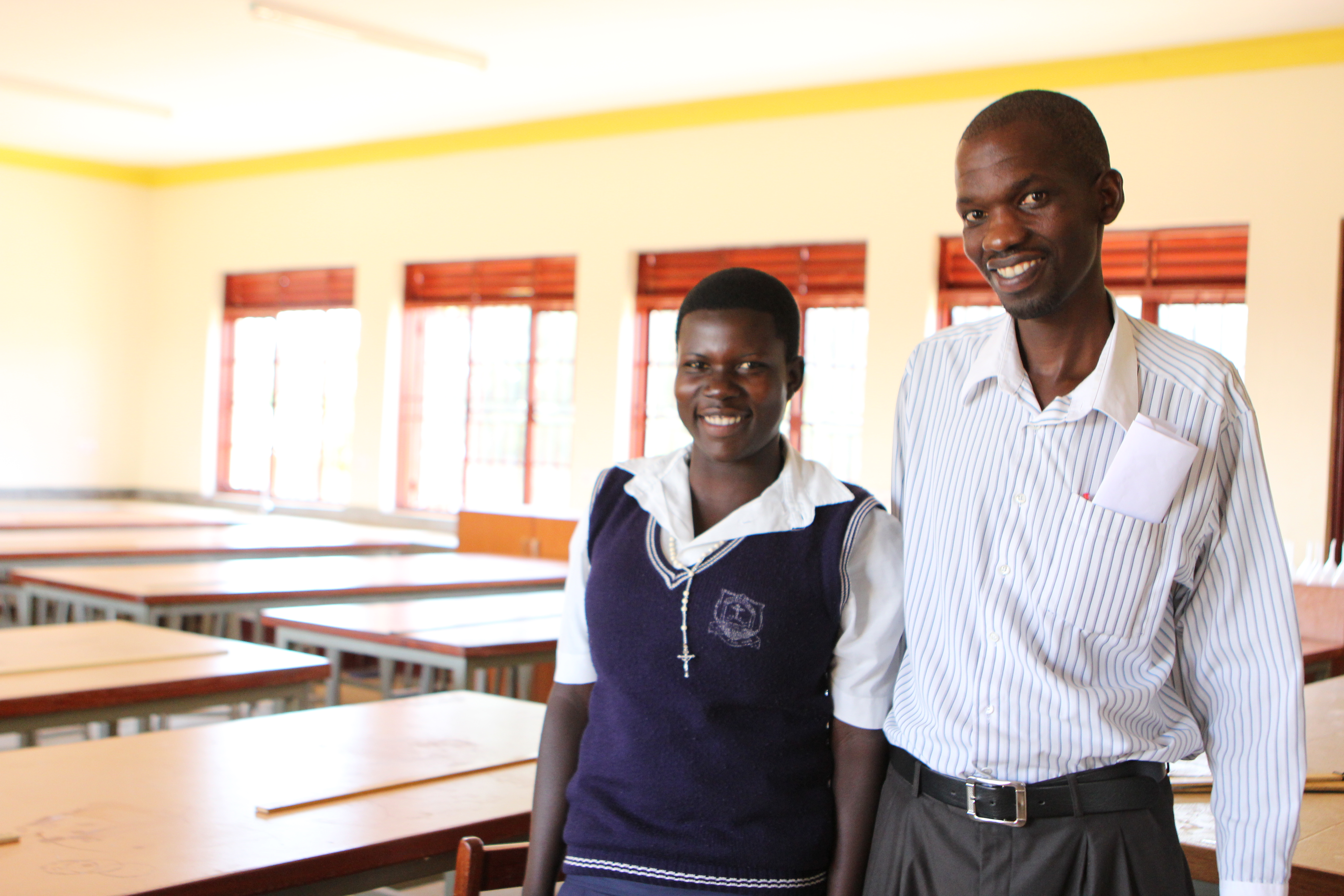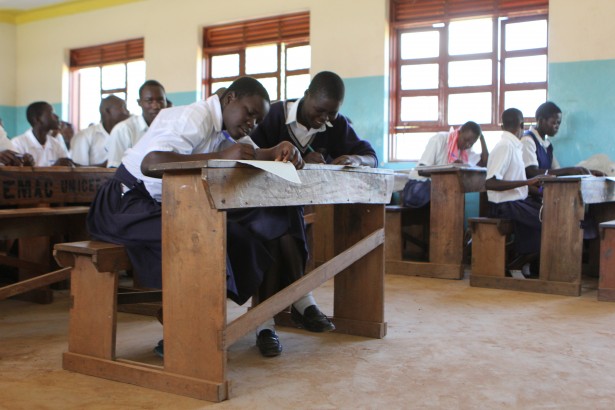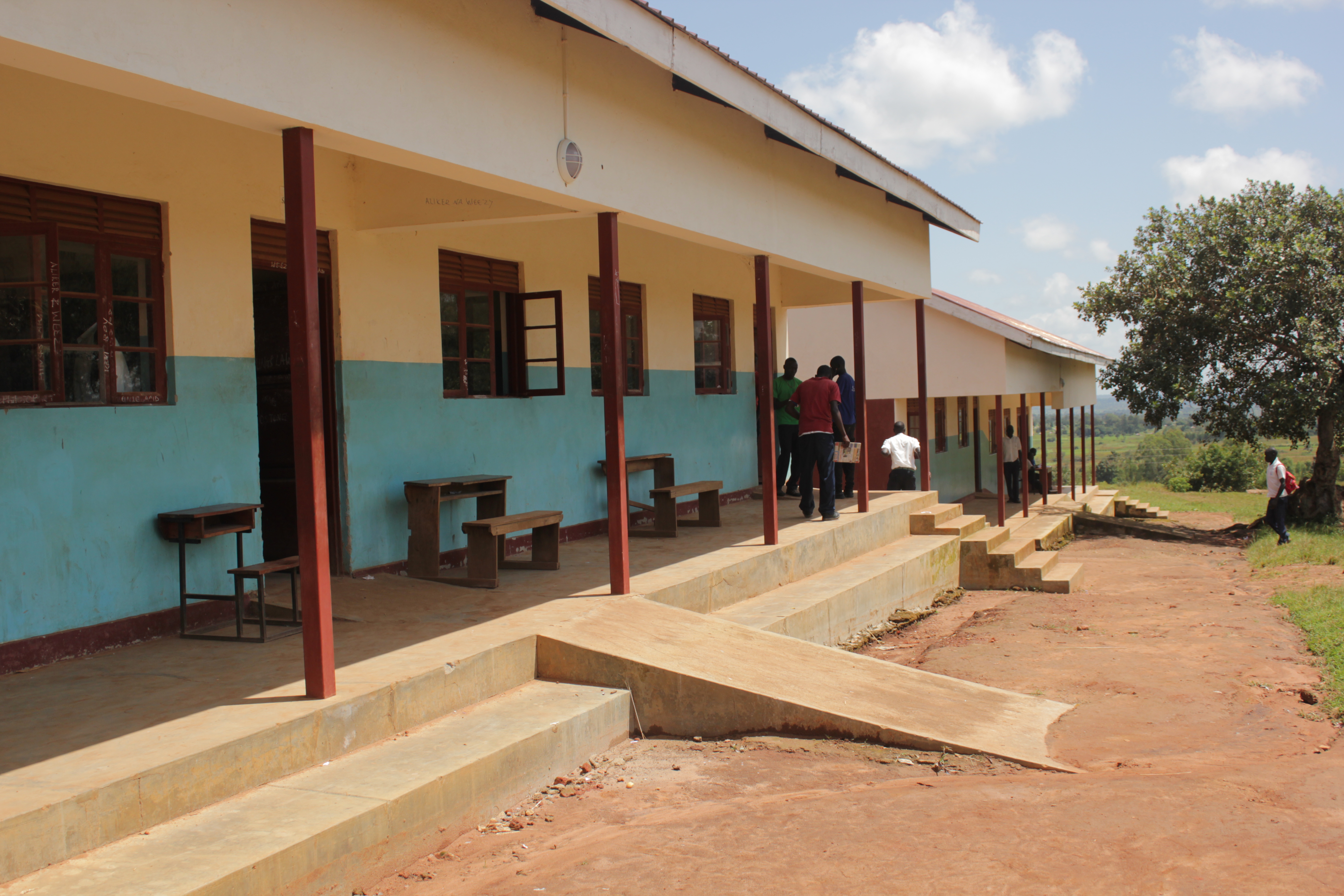The red-roofed buildings of Keyo Secondary School are situated high on a hill with a sweeping view of the surrounding scenery. It’s a peaceful atmosphere – making it hard to believe that the school was forced to leave its campus as a result of the LRA conflict not long ago.
Keyo is a classic example of resilience, supported by Invisible Children’s Schools for Schools program, as well as the commitment of the students and staff. After Keyo was first displaced in 1996, it took 13 years for it to return to its original location. Now, four years since returning to its campus, the school continues working to improve its academic standards.

LSP scholar Vivian Priska Akwero (left) and science teacher Alfred Odong (right) stand in the new science lab at Keyo Secondary School
Alfred Odong, a biology and chemistry teacher, is looking forward to the handover of the school’s new science lab, which has ample room for holding classes as well as storing materials. He has only worked at Keyo for eight months, but notices the impact the permanent campus and buildings have for students.
“When they were [in town] they faced a lot of problems. The infrastructure was not there. It was not enough. That led to high school dropout rates. If there are few classrooms, students come in and if there is nowhere to sit, they would leave,” he said.
But now, he explains, better buildings are making it easier to motivate students to attend their classes.

Students attend class in one of the classrooms at Keyo that was built by the Schools for Schools program. In addition to building the laboratory, Invisible Children handed over three blocks of two classrooms each to Keyo in 2010.
For Vivian Priska Akwero, a third year student and beneficiary of our Legacy Scholarship Program, the new laboratory and improved classrooms are helping her study well and achieve her goal of becoming a doctor one day.
While the Keyo she has attended has always been located back on its original campus, she imagines how difficult it must have been for students to perform well on their exams without classroom structures and areas to study.
“When the school was still displaced, students were studying outside. But now for us we are inside the classrooms with no distractions there. Even rain cannot stop us from learning when we are inside,” Vivian said.
Now that basic infrastructure, such as the classrooms Vivian mentioned, is in place, we are excited to celebrate a new chapter for Schools for Schools. The program is transitioning to improving the schools’ educational climates through extracurricular activities, career guidance and trainings for teachers and students. Since 2006, we have constructed or refurbished over 230 structures at our 11 partner schools and look forward to provide more opportunities for the future leaders of Uganda.

Think people should hear about this?